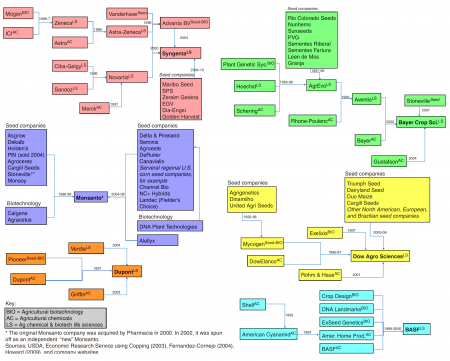There’s been a whole lot of noise lately about how to feed 9 billion people well, much of it adopting ammunition of silver. Organics can do it. GMOs are essential. Women farmers. Microdoses of fertiliser. Sequence everything. Drip irrigation. Et cetera, et cetera. Mostly special interest groups looking after their special interests. And like Dr Johnson’s apocryphal epigram, they’ll never agree because they are arguing from different premises. In the meantime, though, is it any wonder that some people take umbrage at pronouncements like these:
The United States of America is the world leader in agriculture. We have invested in domestic agricultural education, infrastructure and distribution, and reaped the rewards. Other countries look to us for new technologies and new systems. It is time to teach them more efficient farming methods.
That, from one Christopher Barden, is the prelude to a call to increase the number of agricultural exchanges, which “allow young or mid-career agriculturalists to come to the U.S. and live and work alongside American farmers and learn the work ethics, technologies, organization and honesty practiced in that community. Participants can earn money to invest in their agri-businesses at home while taking back a bank of knowledge and respect.” Mr Barden, as it happens, “is the vice president of Worldwide Farmers Exchange, a 501(c)(3) nonprofit independent of government funding”.
I wonder whether any of the young or mid-career agriculturalists have any solutions to, say, the problems of the Gulf of Mexico dead zone, or the externalities imposed by concentrated pig operations?
Dan Glickman, former US Secretary of Agriculture, tells a very familiar story in an article for Diplomatic Courier magazine. Feeding a Growing World Sustainably and Nutritiously goes through the usual reasons and rounds up the usual suspects, to whit: invest in “basic and adaptive agricultural research,” in “the production of fruits and vegetables and other nutrient-dense specialty crops,” and especially in women.
Investing in women has positive repercussions not just for productivity, but also for nutritional improvement. Women make the majority of household nutritional decisions, and giving women nutrition information is proven to improve maternal and children’s health.
But here’s a thing: Despite Rhetoric, Women Still Sidelined in Development Funding.
Of course, one can’t blame ex-Secretary Glickman for that. Personally, however, if the problems are as pressing as everyone seems to think they are, wouldn’t it be better to try lots of different approaches, and see which ones work best where, and in what combinations. But no, lets just slag off everyone who doesn’t agree with us. ((As I did to Mr Barden.)) One rather wishes a well-meaning psychologist type would come along and figure out why no one group can even begin to appreciate another’s point of view. The world is diverse, and so are the ways in which people secure their food and nutrition. A first step might be to recognise that.
